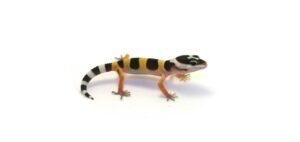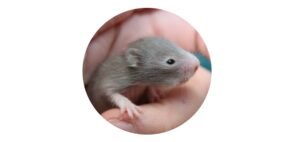Baby Eagles: All You Need To Know
Table of Contents
When do baby eagles hatch?
Baby Eagles have a long incubation period of 35 days from when the first egg hatches. The other eggs hatch by the time the female bald eagles lay the rest of the eggs. The embryo formation in the first egg will be initiated as soon as it hatches as the female incubates it as soon as she lays it.
Due to this, the eggs may differ in their hatching period. The female bald eagles may lay eggs on successive days.
Most egg clutches are completed in a period of 3-6 days, all the eggs of a clutch will hatch within the same period of 3-6 days. The hatching eagles crack open the eggshells independently without any sort of help from their parents.
The latitude can influence the timing of egg-hatching and it varies from the south to the north. In the south, the Bald Eagle’s eggs hatch earlier than in Canada and the northern States.
Region and approximate date of egg hatching
In the case of Florida, the hatching will start as early as November and maybe late as May. While most egg hatching occurs from January to February.
In Chesapeake Bay, Maryland the egg hatching is initiated during January and most eggs will be hatched by the end of March.
In the province of Saskatchewan, Canada egg hatching happens in the second half of May.
In the Yellowstone ecosystem, Wyoming the eggs hatching starts from early April through mid-May. Nests located at higher elevations will result in the late hatching of eggs by April.
In Arizona, the eggs will hatch from February to late mid-March. In the Country of Mexico, the eggs will start to hatch from late January to early February.
In Yukon Territory and Alaska, the egg hatching period starts from late May to June. The majority of egg-laying occurs in the second week of June.
Baby eagles parental care
Both sexes brood the baby eagles after hatching for the first week. It is the female who spends the most time breeding. The nestling may be exposed for a short while after the first week but during the inclement weather, they resume brooding.
In the first 3 weeks of their life, the female takes care of Baby Eagles (also known as hatchlings) most of the time while the male parent searches for food for the Baby Eagles and the mother.
If the female leaves the nest for a short period then the male may replace her and the Baby Eagles are never alone in their nest unattended.
After the third week, the eaglets may be left unattended for some amount of time. This period may increase by the 5th and 6th week as the parents leave them for a longer period and they roost away from the nest.
The female will shield the baby eagles away from the sun during hot and sunny days. The Baby Eagles are kept warm by brooding on cold days.
Feeding of the baby eagles
The first eaglet that hatches is fed from the first day so that it grows more in size compared to its siblings. The male forages and brings back food for the Baby Eagles and the female during the first 2 and half weeks.
The female will usually shed or rip the food that the male brought to feed the Baby Eagles. The feed size increases as they grow. About the 4th week, both parents start to look for food and will bring back food to the nest.
When the Baby Eagles grows older, the female parent will start to bring in more food. The Baby Eagles can tear the fish pieces brought by the parents by the 7th week.
The eldest of the brood will procure more food. Field observations show dismal differences in the feeding of 3 four week old Baby Eagles and the portion each one gets.
When the adult parent brought a large fish, about 67% of it was consumed by the largest eaglet, while the second eaglet received 18.9% and the third eaglet only got 13.7%. Field observation in another nest showed drastic differences.
There were 3 baby eagles of which the largest eaglet got 96% of the fish, while the second-largest received 2.5% and the third only got a mere 1.2%. The smallest eaglet suffered from starvation and eventually died.
Do baby eagles kill their siblings?
Baby Eagles do kill their siblings and are very aggressive towards other siblings of the brood. Baby Eagles may often hurt each other by fierce fights or may grow together. The driving force of aggression and its intensity in eaglets is food availability.
When there is plenty availability of food, then members of brood are not much aggressive towards each other. The Baby Eagles may fledge at similar sizes even though they were of different sizes in earlier stages.
In the scarcity of food, the difference in size is more pronounced within the eaglets of the same brood. The largest Baby Eagles takes advantage of its size and seizes the little food available as a result the other siblings may starve and die.
The smallest Baby Eagles is killed by their fierce fights or dies due to starvation. If food is abundant then the brood may survive without any issues.
If there is a food shortage then the largest will more aggressive and will procure most of the food brought to the nest. The adults bring the required amount of food to the nest but do not intervene in the fights of the brood.
If one of the three eaglets in the nest ends up dying, why do bald eagles lay three eggs? The parents will try to maximize the number of eaglets per breeding season. They may lay 3 eggs hoping for good availability of food in the season.
If there is a shortage of food they may raise only one or 2 eaglets. Laying 3 eggs may also be a precautionary measure to sustain their progeny. In that way, if one of them is infertile or damaged, they can still have progeny.
Growth and development of bald eagle nestlings
The following information helps to identify the age of the hatchling and shows the growth and development at each stage.
1-2 Days
These Baby Eagles may have a light gray or white coat of natal down. This natal down is not thick enough to have insulating properties. The female parent often warms them for the first 9-10 days.
9 Days
The natal down coat is replaced by a gray thermal down that also insulating properties. So by the 15th day, the Baby Eagles can thermoregulate on their own.
3 Weeks
Baby Eagles’s entire body is now shaded gray and juvenile feathers emerge but are not visible yet.
4 Weeks
Juvenile feathers can be observed through the thermal down. These can be seen emerging from the back, lateral tracks, and top of the head.
5 Weeks
Juvenile feathers can also be observed on the belly and breast. The feathers on the back and head become denser as they continue to grow in length.
5.5 Weeks
Juvenile feathers envelop most of the body of the Baby Eagles and its wing and tail feathers are rather short.
6–7 Weeks
Its body is covered in juvenile feathers but parts like thighs, wing underside, and sides of the body still have thermal down and the juvenile feathers are just emerging on these parts.
8-10 Weeks
Juvenile feathers cover the entire body of the bird. The wing and tail feathers grow for the coming weeks after the hatchling may leave the nest.
How long do bald eagle eaglets stay in the nest?
The Baby Eagles may fledge at around 8 to 14 weeks after hatching across their range in North America. Studies concerning nesting bald eagles show the average time the eaglets leave the nest in different regions.
In the case of California, nestlings leave the nest by around 12 weeks.
In Florida, at about 108 days or eleven weeks.
In Maine, around 11–13 weeks.
The differences in the nest leaving time may be contributed to different timings of hatching, sex of the nestling, and food availability.
The first egg that hatches usually grows bigger and develops at a faster rate than its siblings of the brood. Therefore, it will also leave the nest earlier.
During the nesting time if food is available in plenty then the eaglets may develop faster and leave the nest sooner than compared to unfavorable conditions when food availability is less.
The sex of the Baby Eagles also impacts their fledging period. Males fledge earlier and leave the nest sooner. Even when the first egg hatched was a female, even then their male siblings will fledge first.
Do adults and young bald eagles clean up the nest?
Young Baby Eagles usually defecate within their nest but outside of their bole. As they grow they learn to defecate outside the nest region when shooting their droppings by pointing their rear ends to the outside of the nest.
In the bald eagle nests that consist of eaglets a distinguished halo of whitewash on the vegetation on the ground below the nest.
The adult eagles do not clean the bones and do not get rid of the left-over carcasses they bring to the eaglets. These leftovers may be buried in the nest by moss, grass, or other nesting materials. The nest may develop a pungent odor.
Calls of baby eagles
The Baby Eagles may start to make faint calls by the first week. Their calls are more composed and louder by the 4-5th week when they learn to stand up. Their calls become louder when their parents bring back food otherwise they vocalize softly in the nest.
Young eagles sometimes fall to the ground; do they do it on purpose?
Many young Baby Eagles indeed fall to the ground, but they do not do it on purpose. It can be observed that the eaglets often fall to the ground, but it is not on purpose.
By the 8th week, they start to flap their wings in order to strengthen their muscles. After they flap their wings they also do some small jumps in the nest.
After which they start exercising their skills of take-off and landing usually performing them branch to branch. If they miss a landing they may end up on the ground.
The parents don’t teach the eaglets how to fly but they encourage them when they start to fledge. The eaglets often fall to the ground while practicing flying and may remain there for many weeks.
During this time the parents continue to feed them so that they gain more strength and skills so that they can fly. Eaglets on the ground may be susceptible to predators like mountain lions, coyotes, and foxes.
How long do young bald eagles stay with their parents after fledging?
After 5 to 10 weeks after fledging the eaglets may still require their parents for food as they are still completely dependent on them for food. During the first 5 weeks of fledging the eaglets are not capable of catching their prey.
The juvenile eaglets wander around their parents following them everywhere like when they go around the trips to feeding grounds. They often observe the adult while they capture the food.
During this time their skills of hunting and foraging start to develop. They may often start by capturing floating dead fishes or by scavenging on carcasses. They usually feed on fish around this time.
They by trial and error learning to hunt. They start to hunt for waterfowls and other animals and may no longer require their parents.










